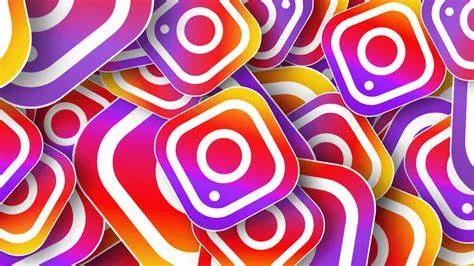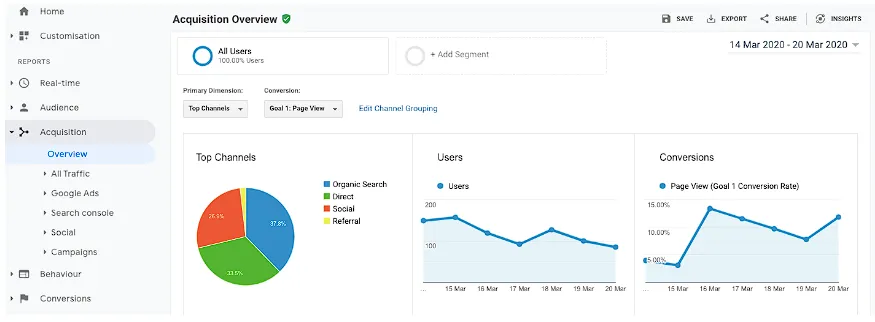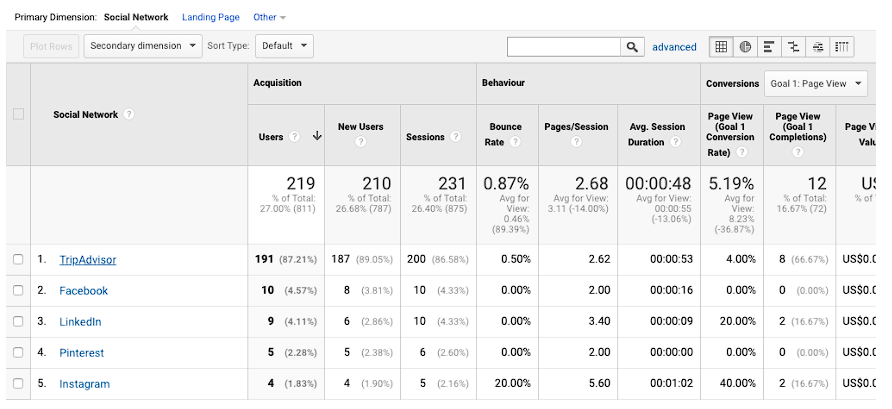6 Instagram Marketing KPIs – Operations Staff Must Track
Among the myriad of social media platforms, Instagram is undoubtedly one of the most trafficked and highly engaged, making it an indispensable tool for businesses looking to promote their products.
Why is Instagram Marketing so Valuable?
The value of Instagram marketing is multifaceted, encompassing its vast user base, the allure of visual content, high user engagement, and a rich array of advertising tools and features.
With nearly a billion active users per month, Instagram provides a broad potential customer base. Moreover, user engagement on Instagram is 58 times that of Facebook, with an interaction rate of 2.2%, far exceeding Facebook's 0.22%, indicating a greater propensity of Instagram users to interact with content.
Instagram allows brands to showcase their products in real-time, enhancing users' desire to purchase through visually appealing content, offering a variety of content formats such as photos, videos, Stories, IGTV, etc., and providing a wealth of marketing means to attract users. It also offers multiple advertising solutions, including sponsored posts, linked ads, and Instagram Story ads, which can help businesses increase brand awareness and sales.

Additional Points:
- Young User Demographics: Instagram boasts a large number of young users, with 69% of its users under the age of 35, who are typically more active and willing to try new products.
- Strong Purchasing Power: Users aged 18-34 not only engage more but also have significant purchasing power, enabling brands to directly reach potential buyers through Instagram marketing.
- Effectiveness of Influencer Marketing: Influencer marketing on Instagram is highly effective, with many users making purchases based on influencers' recommendations, providing a pathway for brands to engage with their target audience through influencers.
- Humanizing Brands: Collaborations with influencers can add a personal touch and authenticity to brands, fostering deeper connections with consumers.
- Cost-Effectiveness: Compared to other advertising channels, Instagram marketing can offer a higher cost-effectiveness, especially when collaborating with micro or nano influencers.
- Sustained Growth Trend: The user base and influencer marketing market on Instagram are expected to continue growing, suggesting that the value of Instagram marketing may further increase in the coming years.
6 KPIs to Focus on for Instagram Marketing
Reach Growth Rate
In Instagram marketing, the Reach Growth Rate is a key KPI that measures the speed and extent to which a brand's advertising reaches new users (unique users) within a specific time frame. This metric is crucial for understanding the impact and reach of advertising campaigns.
Calculation Method
1. Determine the Reach values at the starting time point ( T1 ) and the ending time point ( T2 ).
2. Use the following formula to calculate the growth rate:
Reach Growth Rate = [ ( Reach at T2 - Reach at T1 ) / Reach at T1 ] * 100%
Influencing Factors
- Ad content and creativity: High-quality, creative ad content tends to attract more users, thereby increasing the growth rate of coverage.
- Target audience precision: Precise audience targeting ensures that ads are displayed to the user groups most likely to be interested, thus improving coverage growth.
- Advertising investment: Paid advertising can significantly increase Reach, especially when targeting is precise. A higher advertising budget usually means broader ad exposure, which may increase the growth rate of coverage.
- Posting time and frequency: The timing and frequency of ad posting can also affect the growth rate of coverage. Certain periods may have higher user activity, thereby enhancing ad coverage.
- Competitive environment: The intensity of market competition also affects the growth of ad coverage. If competitors also make a large number of ad investments during the same period, it may divert audience attention, thus affecting coverage growth.
- User interaction: User behaviors such as liking, commenting, and sharing content increase visibility and thus improve Reach.
Note: Avoid solely pursuing Reach Growth Rate while neglecting user quality and interaction quality.

Follower Growth Rate
Follower Growth Rate refers to the proportion of new followers gained by an Instagram account within a specific period relative to the original follower count. It is commonly used to measure a brand's ability to attract and retain new followers on Instagram and assess the growth of the brand's social media influence due to advertising activities.
Calculation Method
1. Determine time points: Select two time points ( T1 and T2 ), which can be one day, one week, one month, or longer apart.
2. Calculate follower count: Record the number of Instagram followers at T1 and T2.
3. Use the following formula to calculate the growth rate:
Follower Growth Rate = [ ( Followers at T2 - Followers at T1) / Followers at T1] * 100% ]
Influencing Factors
- Advertising campaigns: Successful advertising campaigns can significantly increase brand exposure, attracting more users to follow and become fans.
- Content quality: High-quality, interesting, and relevant content is more likely to attract user attention and sharing, thereby increasing the growth rate of followers.
- Interaction frequency: Interacting with fans, such as replying to comments and liking user content, can enhance a sense of belonging and loyalty among fans, attracting more new followers.
- Collaborations and influencer marketing: Collaborations with influencers or other brands can expand brand exposure and attract their followers to become yours.
- Promotions and giveaways: Hosting promotional events or giveaways can motivate users to follow the brand to participate in the activities, thereby increasing the number of followers.
- Posting frequency and timing: Regular content posting and choosing the best posting times can improve content exposure and fan interaction rates.
Note: Follower growth rate is a long-term indicator that requires continuous effort and strategic adjustment. Pursuing high-quality followers is more important than simply pursuing numbers. Engage in multi-channel marketing simultaneously.

Engagement Rate
Engagement Rate refers to the frequency at which users interact with Instagram posts within a certain period, typically expressed as a percentage of the total number of interactions (likes, comments, shares, saves, and clicks) relative to the total number of people reached. This metric is crucial for assessing the effectiveness of advertising campaigns and user interest in brand content.
Most companies have an average engagement rate between 3-6%.
Calculation Method
1. Determine interaction types: Interaction types on Instagram include likes, comments, shares, saves, as well as story views, and replies.
2. Calculate total interactions: Count the total number of interactions for all posts within a specific period.
3. Determine total reach: Reach refers to the total number of unique users who have seen the post.
4. Calculate Engagement Rate:
Engagement Rate = ( Total Engagement / Reach) * 100%
Influencing Factors
- Content quality and relevance: High-quality and relevant content is more likely to achieve a higher engagement rate.
- Posting frequency and timing: Regularly posting content and choosing the right times to post can increase content exposure and engagement rates.
- Visual appeal: Well-crafted images and videos are more likely to attract user interaction.
- Call-to-action (CTA): A clear CTA can encourage users to interact, such as liking, commenting, or sharing.
- User interaction and response: Actively responding to user comments and messages can enhance a sense of interaction and encourage more users to participate.
- Contests and challenges: Hosting contests, challenges, or Q&A sessions can motivate users to engage more.

Traffic Directed to Your Site
Traffic Directed to Your Site refers to the number of unique visitors who directly access a brand's website through a link in an Instagram ad. This metric shows the effectiveness of the ad in driving traffic to a specific website or landing page.
Calculation Method
1. Set up tracking: Include website tracking parameters, such as UTM codes, in Instagram ads to distinguish traffic from Instagram.
2. Use analytics tools: Utilize website analytics tools like Google Analytics to track and report visitors from Instagram.
3. Define a time frame: Select a specific period to measure traffic, such as daily, weekly, or during a campaign.
4. Calculate traffic: Count the number of unique visitors to the website from Instagram ads during that time frame.
Utilize Google Analytics to obtain:
Go to the GA dashboard, navigate to "Acquisition" in the left menu, and click "Overview."

Scroll down to the table and click on "Social" to view a range of metrics about visitors coming specifically from social media platforms.

Click on Instagram for a quick overview of users, new users, and sessions on your site from Instagram.
Influencing Factors
- Ad content and creativity: Attractive, relevant ad content is more likely to entice users to click and visit the website.
- Target audience precision: Precise audience targeting ensures ads are shown to users most likely to click the link and visit the website.
- Ad format: Different ad formats (e.g., image ads, video ads, carousel ads, and story ads) may have varying effects on traffic generation.
- Call-to-action (CTA): A clear, guiding CTA can encourage users to click the link and visit the website.
- Landing page optimization: An efficient landing page design and optimization can enhance user experience and conversion rates.
- Ad posting time: Choosing the right time to post ads can increase traffic.
Note: Ensure the website provides a good user experience to improve conversion rates.
CPC
"CPC" stands for "Cost Per Click" which is the average cost an advertiser pays for each user click on their Instagram ad. It is a key performance indicator (KPI) for measuring the cost of ad clicks. Click actions include users clicking on links, buttons, or any clickable elements in the ad, typically intending to guide users for further interaction or to visit the brand's website. CPC is crucial for evaluating the cost-effectiveness of ads and managing advertising budgets.
Calculation Method
1. Determine total spend: Calculate the total advertising expenditure during a specific campaign or period.
2. Determine total clicks: Count the total number of clicks received during the same advertising campaign or period.
3. Calculate CPC:
CPC = Total Advertising Spend / Total Clicks
Influencing Factors
- Ad creativity and copy: Strong ad creativity and eye-catching copy can improve click-through rates, thereby reducing CPC.
- Target audience targeting: Precise targeting ensures ads are shown to the most relevant user groups, increasing click-through rates and reducing CPC.
- Bidding strategy: The bidding model for Instagram ads affects CPC, and advertisers can optimize CPC by adjusting their bidding strategies.
- Ad type: Different types of ads (such as image ads, video ads, carousel ads, and story ads) may have different CPCs.
- Market competition: In competitive markets or times, CPC may be higher as advertisers need to pay more to secure clicks.
Note: CPC can change over time and with market conditions, requiring continuous monitoring and optimization.

Conversion Rate
Conversion Rate refers to the ratio of the number of users who complete a conversion action within a certain period to the total number of users who see the ad. It reflects the proportion of users who see the ad and take the desired action (such as making a purchase, signing up, or downloading), indicating the effectiveness of the ad in converting users into potential or actual customers. Conversion Rate is crucial for evaluating the ultimate effectiveness of the ad and the return on investment (ROI).
Calculation Method
1. Define conversion actions: First, clarify what is considered a conversion, such as a purchase, sign-up, or download.
2. Calculate conversion occurrences: Count the number of users who complete conversion actions during a specific advertising campaign or period.
3. Calculate total impressions: Count the total number of ad impressions during the same advertising campaign or period.
4. Calculate Conversion Rate:
Conversion Rate = ( Conversion Occurrences / Impressions) * 100%
Influencing Factors
- Ad creativity and copy: Strong, relevant ad content is more likely to attract users to click and convert.
- Target audience precision: Precise targeting ensures ads are shown to users most likely to convert.
- Landing page optimization: The relevance, design, and load speed of the landing page after users click on the ad will affect the conversion rate.
- Call-to-action (CTA): A clear, attractive CTA can encourage users to complete conversion actions.
- User experience (UX): A good user experience, including ease of use, simple navigation, and smooth payment process of a website or app, helps improve conversion rates.
- Competitive environment: The level of market competition and the actions of competitors also affect the conversion rate.
Note: Ensure that advertising and conversion tracking comply with relevant laws, regulations, and platform policies.

How to Improve Instagram Marketing KPIs?
Strategies to improve Instagram marketing KPIs involve various aspects, including content creation, audience targeting, ad optimization, and interaction management.
1. Enhance Content Quality
- Visual Appeal: Use high-quality images and videos to ensure visual content is eye-catching and aligns with the brand image.
- Content Diversity: Post various forms of content, such as photos, videos, Reels, Stories, and live broadcasts, to maintain user interest.
- Consistent Brand Style: Maintain a consistent brand style and tone to make it easy for users to recognize and remember your brand.
2. Precise Audience Targeting
- Analyze Audience Data: Use Instagram Insights and other analytical tools to understand your audience, including age, gender, geographic location, and interests.
- Market Segmentation: Based on audience data, create more targeted content and advertisements.
- Use Advertising Targeting Tools: When placing advertisements, use Instagram's detailed targeting options to ensure ads are shown to the most relevant audience.
3. Optimize Ad Creativity and Strategy
- Clear Call-to-Action (CTA): Use clear, guiding CTAs in advertisements to encourage users to take action, such as "Click to Learn More" or "Buy Now."
- Testing and Optimization: Conduct A/B testing to compare the effectiveness of different ad versions and identify the most attractive and converting creatives.
- Dynamic Ads: Use dynamic ads to automatically generate personalized ad content based on user behavior and interests, improving click-through rates and conversion rates.
4. Increase Interaction Rate
- Actively Respond to Users: Respond promptly to comments and private messages to interact with fans and enhance a sense of participation.
- Interactive Content: Post interactive content such as Q&As, polls, challenges, etc., to encourage user participation.
- User-Generated Content (UGC): Encourage fans to share brand-related content and showcase this content on the brand account to increase interaction and trust. Embed Instagram on website to seamlessly display UGC and enhance user engagement.
5. Optimize Conversion Path
- Landing Page Optimization: Ensure that the landing page after clicking on the ad is designed to be simple, fast-loading, and relevant, with a clear CTA.
- Simplify Conversion Process: Reduce the steps required for users to complete conversions and provide convenient payment and registration options.
- Track Conversion Data: Use analytical tools to track user behavior after clicking on the ad to identify and optimize key steps affecting conversions.
6. Increase Website Traffic
- Link Usage: Use links wisely in Instagram bios, stories, and ads to direct traffic to the website or specific landing pages.
- Regular Updates: Regularly update the link in the Instagram bio to align with the latest marketing campaigns and content.
- Use UTM Parameters: Utilize UTM parameters in links to track traffic from different ad campaigns, analyze results, and optimize strategies.
7. Enhance Follower Growth Rate
- Contests and Promotions: Host contests or promotional events to attract users to follow and share the brand account.
- Collaborative Promotions: Collaborate with influencers or brands in related fields to expand brand exposure and attract more followers through their influence.
- High-Quality Frequent Posting: Maintain a consistent frequency of high-quality content to continuously attract and retain followers.
8. Utilize Analytical Tools
- Instagram Insights: Use Instagram Insights to analyze the performance of each post, understanding audience preferences and interaction.
- Third-Party Tools: Platforms like Hootsuite, Sprout Social, etc., offer more comprehensive analysis and reporting features to help you gain a deeper understanding of ad effectiveness and user behavior.
- Regular Review and Adjustment: Regularly review KPI data and adjust content strategies and advertising plans based on analysis results.
9. Continuous Learning and Improvement
- Track Industry Trends: Stay informed about industry trends and competitors, continuously learning new marketing techniques and strategies.
- Gather User Feedback: Understand user needs and preferences through surveys and feedback to adjust marketing strategies.
- Training and Enhancement: Provide relevant training for the team to improve their skills in content creation, ad placement, and data analysis.













